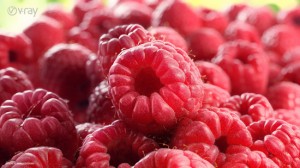
Progressive Rendering
V-Ray 3.0 introduces a new Progressive Image Sampler. Fast to set up and easy to control, the Progressive Image Sampler generates fast feedback even with complex features such as Environment Fog, Depth of Field, and Motion Blur. The Progressive Image Sampler uses a path traced rendering engine compatible with multiple GI solutions including Brute Force, Irradiance Map, and Light Cache.
With the new Progressive Renderer it’s possible to set up a scene in seconds and iterate even with the most complex V-Ray features. This example showcases how to easily fine-tune V-Ray Fog.
—————————————————————————————————————————————–
Faster Ray Tracing
Ray Tracing Performance
V-Ray 3.0 introduces significant optimizations to the ray tracing core. This speeds up calculations for Brute Force GI, Progressive Path Tracing, Reflections, Refractions, and more. Beta testers have reported speed increases of up to 5X.
Integrated Intel Embree Raycaster
V-Ray 3.0 includes the Intel Embree raycaster, specifically designed to increase the performance of photorealistic rendering.*
*requires compatible hardware.
Dynamic Bucket Splitting
Dynamic Splitting automatically reduces the size of render buckets to maximize the use of all CPU thread.
This short video demonstrates the improved rendering speeds of V-Ray 3.0.
—————————————————————————————————————————————–
Simplified User Interface
Designed with new and experienced users in mind, V-Ray 3.0 introduces a simplified user interface with 3 modes. Each mode, Basic, Advanced, and Expert, can be selected to match an artists’ preference.
—————————————————————————————————————————————–
Quick Settings
Quick Settings provide artists with production-ready presets and simple rendering quality controls all within a single compact interface.
This short video takes a look at the new V-Ray Toolbar and Quick Settings added to V-Ray 3.0.
—————————————————————————————————————————————–
Advanced V-Ray Frame Buffer
The new V-Ray Frame Buffer introduces advanced color controls for Contrast, HSL, and Color Balance. In addition, the VFB now includes support for LUTs (.cube), ICC (.icc), and OpenColorIO (.ocio) color management profiles.
This short video demonstrates the improved Frame Buffer in V-Ray 3.0.
—————————————————————————————————————————————–
Render Mask
Render Mask uses an object selection, include/ exclude list, or texture map to control the exact pixels to be rendered.
This short video demonstrates the new Render Mask feature in V-Ray 3.0.
—————————————————————————————————————————————–
Faster Hair
V-Ray 3.0 introduces core ray tracing improvements with optimizations for shading and rendering millions of strands of semi-transparent hair. Beta testers report speed increases up to 15X.
This videos demonstrates a quick example of rendering hair created using Ephere’s Ornatrix plugin and compare the render performance gains in V-Ray 3.0.
—————————————————————————————————————————————–
New Skin Shader
V-Ray 3.0 introduces the VRaySkinMtl. With artist-friendly controls, the VRaySkinMtl is a dedicated skin shader with built in Subsurface Scattering and layered reflections.
—————————————————————————————————————————————–
Ray Traced SSS
V-Ray 3.0 introduces improved Subsurface Scattering with support for object-based and ray traced illumination. V-Ray RT CPU also adds SSS support.
This short video takes a look at the new Ray Traced option for the VRayFastSSS2 shader.
—————————————————————————————————————————————–
VRmats
V-Ray 3.0 introduces VRmat functionality to 3ds Max. Previously known as Vismats, VRmats are an XML-based material description for sharing V-Ray shaders across multiple applications. VRmats are currently compatible with V-Ray 3.0 for 3ds Max, V-Ray 2.0 for Rhino, and V-Ray 2.0 for SketchUp. Support for additional applications including Maya and Softimage is currently in development.
This video demonstrates VRmats – a new set of universal shaders for use across multiple applications.
—————————————————————————————————————————————–
OSL Support
Program custom shaders using Open Shading Language (OSL) developed by Sony Picture Imageworks.
—————————————————————————————————————————————–
Alembic Support
V-Ray 3.0 adds support for the open source Alembic file format (.ABC). Import Alembic geometry caches (including particles and hair) using the V-Ray Proxy loader.
—————————————————————————————————————————————–
Deep Image Support
V-Ray 3.0 adds support for Deep Image output including the OpenEXR 2.0 format.
Deep images store color and depth information for each pixel, enabling artists to take advantage of Deep Compositing workflows.
—————————————————————————————————————————————–
Metaballs
Introducing a new VRayMetaball object for ray traced isosurfaces based on particles.
—————————————————————————————————————————————–
VRayClipper
The VRayClipper is a new helper for creating cutaway and section renders. Using a simple plane, it will clip away parts of a scene at render time.
—————————————————————————————————————————————–
V-Ray RT GPU Render Elements
Render final frame images using V-Ray RT GPU with Render Elements for compositing.
V-Ray RT GPU supports:
- Increased performance using CUDA, NVIDIA’s parallel computing platform
- Motion Blur (Transformation and Deformation)
- Instanced Geometry
- VRay Proxy Objects
- Layered Materials using VRayBlendMtl
- Texture-mapped Area and Mesh Lights
- Skylight Portals using Simple Mode
—————————————————————————————————————————————–
Probabilistic Light Sampling
Probabilistic Light Sampling reduces the number of lights evaluated at render time. This optimizes rendering scenes with many lights.
—————————————————————————————————————————————–
Max Ray Intensity
Max Ray Intensity clamps secondary rays to remove noise generated by very bright sources. This removes artifacts while retaining dynamic range.
—————————————————————————————————————————————–
Distributed Rendering
Distributed Rendering gives artists the ability to use multiple computers working in parallel to render a single image. V-Ray 3.0 adds two new Distributed Rendering options: Transfer Missing Assets and Use Local Machine.
—————————————————————————————————————————————–


















